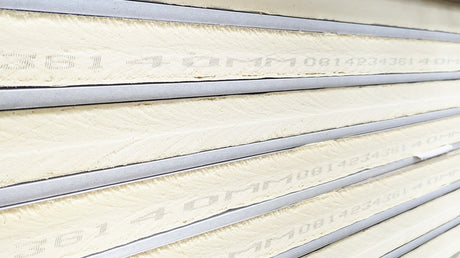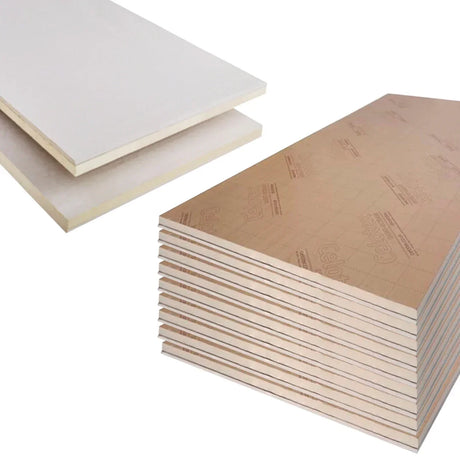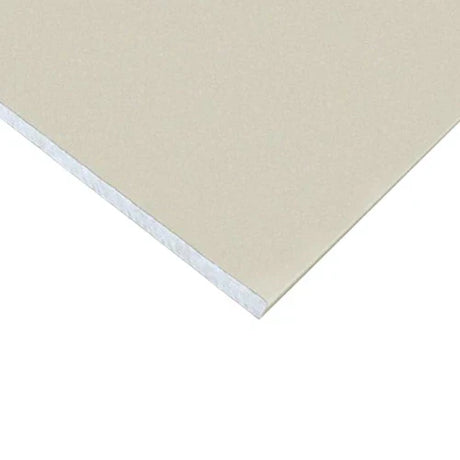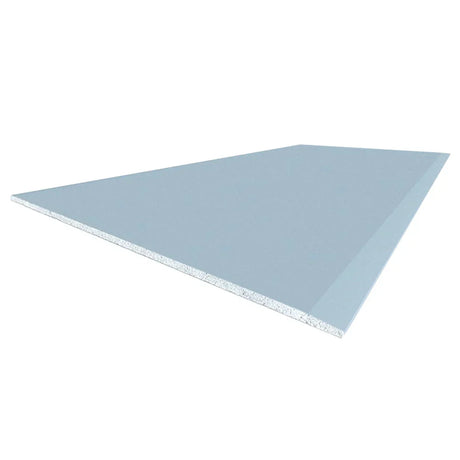When I first started researching soundproofing solutions for my home, I'll admit I was sceptical. Could a simple sheet material really make a noticeable difference to the noise levels in my house? Like many people, I'd heard about acoustic plasterboard but wasn't sure whether it was genuine innovation or just clever marketing. After diving into the technical details and speaking with the knowledgeable team at DIY Building Supplies, I discovered the answer is far more interesting than I expected.
The truth is that acoustic plasterboard can significantly reduce noise transmission between rooms – but only when you understand what you're working with and how to use it properly. Let me share what I've learned about this fascinating building material, explained in straightforward terms that anyone can understand.
Understanding the Basics: What Makes It Different?
Standard plasterboard has been a staple of British construction for decades. It's affordable, easy to work with, and does a reasonable job of dividing spaces. However, when it comes to blocking sound, regular plasterboard has significant limitations.
The specialised acoustic version works differently. Whilst it looks similar to standard board at first glance, the internal composition has been engineered specifically to tackle noise problems. British manufacturers like Knauf and British Gypsum have developed these products using two key principles that anyone can grasp: making the boards heavier and adding materials that absorb sound energy rather than simply bouncing it back.
The Weight Factor
Think about the last time you tried to have a conversation through a solid oak door compared to a hollow internal door. The thicker, heavier door blocks far more sound. This same principle applies to plasterboard. Acoustic versions typically weigh around 12-15kg per square metre, whilst standard plasterboard weighs just 8-10kg per square metre.
That extra mass doesn't just sit there – it works actively to reduce the amount of sound energy that can pass through the wall. The heavier the material, the more difficult it becomes for sound waves to set it vibrating, which means less noise travels to the other side.
Sound Absorption Properties
The second clever feature involves what happens to sound energy when it hits the board. Standard plasterboard reflects most sound back into the room. Acoustic versions incorporate special materials within the gypsum core – often including viscoelastic polymers or modified densities – that actually absorb and dissipate sound energy as heat.
Some products from manufacturers we stock at DIY Building Supplies even feature perforated surfaces or textured designs that trap sound waves, preventing them from continuing their journey through your walls. It's this combination of mass and absorption that makes the real difference.
Measuring the Real-World Impact
When I started researching, I quickly encountered technical jargon like "Weighted Sound Reduction Index" and "decibels". Initially overwhelming, these measurements actually tell us something quite practical about performance.
What the Numbers Mean
The Weighted Sound Reduction Index, abbreviated as Rw and measured in decibels (dB), indicates how much sound a material can block. Standard plasterboard typically achieves values between 35-40dB, whilst quality acoustic alternatives can reach 45-55dB when installed as part of a complete wall system.
Here's what surprised me most: a 10dB reduction roughly equates to halving the perceived loudness. That means the difference between hearing your neighbour's television clearly and barely noticing it exists. When I learned this from the technical team at DIY Building Supplies, the investment suddenly made perfect sense.
Realistic Expectations for Your Home
Let me be honest about what you can expect. In typical residential situations, properly installed acoustic solutions can reduce sound transmission by approximately 10-15dB compared to standard construction. This translates to making loud conversations sound like normal speech from the other side of the wall, or reducing television noise to barely perceptible levels.
I've been particularly impressed by success stories involving bathrooms. The combination of soundproofing boards with appropriate insulation materials can virtually eliminate the annoying sound of running water and plumbing from adjacent rooms – something I wish I'd known about years ago!
Choosing the Right Product for Your Needs
Walking into DIY Building Supplies, I was initially overwhelmed by the range of options available. However, the team helped me understand that different products suit different situations, and choosing correctly makes all the difference to your results.
High-Density Options
Products like Knauf's Diamant range or British Gypsum's SoundBloc rely primarily on increased mass. These boards typically measure 15mm thick but deliver significantly better acoustic performance than standard 15mm plasterboard. They excel at blocking airborne sound – voices, music, television noise, and general household racket.
For most residential projects, these high-density options represent the sweet spot between performance and cost. They're straightforward to install if you've got basic DIY skills, though you'll need to account for the extra weight when planning your project.
Specialist Systems
For more demanding applications – perhaps you're building a home cinema or music practice room – manufacturers offer specialist systems designed to work with complementary products. These might include perforated boards for situations where sound absorption is as important as sound blocking, or multi-layer systems that combine different materials for enhanced performance.
The experts at DIY Building Supplies can help you understand which system suits your specific noise challenge. When I explained my situation, they immediately identified the right specification rather than simply trying to sell me the most expensive option.
Installation: Where Success Really Happens
This is the crucial bit that many people overlook. You can purchase the highest-specification acoustic plasterboard available, but if your installation technique isn't right, you'll be disappointed with the results.
Planning Your Approach
Successful soundproofing starts before you pick up any tools. Sound travels through the smallest gaps – around room edges, through electrical outlets, and via connecting structures. I learned to conduct a detailed survey first, noting every potential weak point that might compromise performance.
The team at DIY Building Supplies emphasised that acoustic performance is only as good as the weakest link in your system. That means thinking about edge sealing, avoiding gaps around service penetrations, and ensuring proper integration with other building elements.
Fixing and Sealing Methods
Here's something that surprised me: how you fix boards to the frame significantly impacts performance. Traditional direct fixing to timber or metal studs can create sound bridges that undermine your efforts. For optimal results, consider resilient fixing systems that mechanically isolate the board from the structural frame.
Edge sealing demands particular attention. Don't make my initial mistake of thinking standard decorator's caulk would suffice – you need specialist acoustic sealants that maintain their sealing properties over time and accommodate the slight movements that occur in building structures.
Understanding Building Regulations
When planning any construction work, it's essential to understand the regulatory framework. Building Regulations Part E sets minimum standards for sound insulation in UK construction, particularly between dwellings.
For separating walls between properties, current regulations require minimum weighted sound reduction of 45dB. Acoustic solutions often form part of meeting these requirements, typically used alongside cavity insulation and sometimes resilient mounting systems.
Internal partitions within your home face less stringent requirements, but incorporating soundproofing materials can significantly improve living comfort beyond minimum regulatory compliance. As the DIY Building Supplies team explained, whilst regulations set minimum standards, optimal comfort usually requires exceeding these minimums.
The Investment Question
Let's talk honestly about costs. Acoustic plasterboard typically costs two to three times more than standard board. When I first saw the price difference, I hesitated. However, looking at the bigger picture changed my perspective.
The material cost represents a relatively small proportion of total project costs when you factor in labour, other materials, finishing, and decoration. For the dramatic improvement in living quality, particularly in noise-sensitive situations, the additional investment makes sense.
There's also the long-term value consideration. Properties with good acoustic performance command premium values in both rental and sales markets, particularly in urban areas where noise is a significant concern. The improved living environment provides substantial quality-of-life benefits that are difficult to quantify financially.
Common Mistakes to Avoid
Learning from others' mistakes saves time, money, and frustration. The most common misconception is expecting acoustic boards alone to provide a complete solution. They work most effectively as part of a comprehensive system that addresses all aspects of sound transmission.
Another common error involves confusing airborne sound with impact sound. These specialised boards primarily tackle airborne sound transmission – voices, music, television. They're less effective against impact sounds like footsteps or vibration transmission, which require different approaches such as resilient floor systems.
Getting Expert Support
When I first walked into DIY Building Supplies in Nottingham, I was just beginning to understand soundproofing. The team's patient, knowledgeable approach transformed my project from a vague idea into a successful reality.
Their technical support extends far beyond simply selling materials. Whether you're a professional contractor seeking specification guidance or a DIY enthusiast planning your first acoustic project, they provide comprehensive support to ensure optimal outcomes. From initial material selection through to installation guidance and troubleshooting, their commitment to customer success makes all the difference.
If you're considering an acoustic project, I'd strongly recommend engaging with their technical team early in your planning process. Proper specification and planning often make the difference between adequate and exceptional acoustic performance – something I learned the valuable but fortunate way.
Contact DIY Building Supplies today to discuss your soundproofing requirements and discover how the right specification can transform your space into the quiet, comfortable environment you need.









